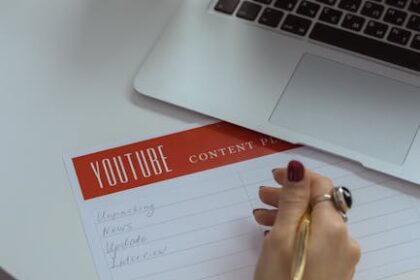Understanding the YouTube Ad Funnel: A Strategic Imperative
Optimizing your YouTube ad funnel is not merely about launching campaigns; it’s a sophisticated, multi-layered process demanding meticulous planning, data-driven execution, and continuous refinement. The journey from a fleeting impression to a loyal customer is rarely linear, particularly within the dynamic visual landscape of YouTube. A well-constructed ad funnel guides potential customers through distinct stages, progressively nurturing their interest and moving them closer to conversion. This comprehensive guide dissects each stage of the YouTube ad funnel, providing actionable strategies for optimization, delving into creative best practices, advanced targeting methodologies, bidding nuances, and critical measurement techniques to maximize your return on ad spend (ROAS).
Stage 1: Awareness – Capturing Attention in a Crowded Digital Space
The awareness stage is your initial handshake with potential customers. On YouTube, this means cutting through the noise with compelling video content that introduces your brand, product, or service to a broad yet relevant audience. The primary goal here is to maximize reach and views among your target demographic, ensuring your message lands on fertile ground without directly pushing for a sale.
Audience Targeting for Broad Reach and Relevance:
- Demographic Targeting: Begin with fundamental demographic parameters such such as age, gender, parental status, and household income. While seemingly basic, these filters lay the groundwork, ensuring your ads are not wasted on completely irrelevant groups. For instance, if your product is a high-end luxury item, targeting lower household income segments might be less efficient. However, avoid overly restrictive demographic filters initially, as this can limit reach. Test broader demographic sets and refine based on performance data.
- Affinity Audiences: These pre-defined audiences, established by Google based on users’ long-term interests and passions, are excellent for casting a wide net over people who genuinely care about topics related to your offerings. For example, if you sell hiking gear, “Outdoor Enthusiasts” or “Travel Buffs” would be highly relevant affinity audiences. Explore custom affinity audiences for more granularity. This involves compiling a list of keywords, URLs, apps, or places that your ideal customer would be interested in. For a healthy food brand, a custom affinity audience might include URLs of popular healthy recipe blogs, keywords like “organic produce delivery,” or apps related to fitness tracking. The power lies in reaching users who actively consume content around these interests, indicating a predisposition towards your product category.
- In-Market Audiences: More focused than affinity audiences, in-market audiences consist of users actively researching products or services in a specific category. These individuals are exhibiting purchase intent, making them valuable for slightly warmer awareness or even consideration-stage campaigns. If you sell cars, “Automobiles/SUVs” in-market audiences are perfect. Google’s algorithms detect this intent through search queries, video views, and website browsing behavior. Leveraging in-market audiences at the awareness stage means you’re not just reaching people who like cars, but people who are actively looking to buy a car, even if they’re not yet familiar with your specific brand.
- Placement Targeting (Channels, Videos, Websites/Apps): This strategy allows you to explicitly choose where your ads appear. You can select specific YouTube channels, individual YouTube videos, or even websites and mobile apps within the Google Display Network. This is incredibly powerful for highly niche products or for piggybacking on the audience of complementary content creators. For example, a gaming headset company could target specific popular gaming channels or videos reviewing gaming hardware. This ensures your ad appears in a context highly relevant to the viewer’s current interest. However, careful monitoring is required to avoid irrelevant or low-quality placements. Utilize YouTube’s analytics to identify top-performing placements and exclude underperforming or brand-unsafe ones. A robust negative placement list is as crucial as your positive one.
- Keyword Targeting (YouTube Search): Although often associated with search campaigns, YouTube also functions as a search engine. You can target users who search for specific keywords on YouTube, mirroring their intent. This is effective for awareness if users are broadly searching for solutions related to your product category. For instance, a coffee machine brand might target keywords like “best home espresso machine reviews” or “how to make barista coffee at home.” This allows you to intercept users at the exact moment they are seeking information relevant to your offering.
Creative Best Practices for Awareness Campaigns:
Your video ad is the cornerstone of your awareness efforts. It must immediately grab attention and clearly communicate your value proposition without overwhelming the viewer.
- The Hook (First 5 Seconds): This is non-negotiable for skippable in-stream ads. Viewers decide to skip or watch within this crucial window. Use visually engaging elements, a bold statement, a compelling question, or a snippet of your product in action. Avoid lengthy brand intros or disclaimers here. The goal is to pique curiosity and provide a reason to watch further.
- Brand Integration (Subtle but Clear): While not a hard sell, your brand should be identifiable. Use consistent branding elements – logos, color palettes, distinctive audio cues – throughout the video. The aim is brand recall. Viewers should associate the positive experience of your ad with your brand name.
- Storytelling and Emotion: People connect with stories. Instead of just listing features, tell a narrative that resonates with your audience’s aspirations, challenges, or desires. Evoke emotions – joy, relief, inspiration – to create a memorable impression. A short, impactful story about how your product solves a common problem can be far more effective than a dry product demonstration.
- High Production Quality: Blurry visuals, poor audio, or amateur editing reflect poorly on your brand. Invest in good lighting, clear sound, and professional editing. This doesn’t necessarily mean Hollywood budgets; modern smartphones and editing software can achieve impressive results, but attention to detail is paramount.
- Concise Messaging: For bumper ads (6 seconds) or short skippable ads, every second counts. Get to the point quickly and clearly. One core message per ad is usually sufficient for awareness. Long, rambling narratives will lose viewers.
- Multiple Ad Variants: Don’t rely on a single creative. Test different hooks, storylines, calls to action (even if subtle, like “Learn More”), and video lengths. A/B testing different creatives across various audience segments will reveal what resonates most effectively. A diverse creative library ensures your campaigns stay fresh and effective, preventing ad fatigue among your audience.
Ad Formats for Awareness:
- Skippable In-Stream Ads: The most common format. They play before, during, or after other videos, and viewers can skip after 5 seconds. Ideal for storytelling and driving initial interest.
- Non-Skippable In-Stream Ads: Up to 15 seconds, these must be watched entirely. Use for short, impactful messages where guaranteed view completion is critical. They are often more expensive but offer higher message retention.
- Bumper Ads: A hyper-concise, 6-second non-skippable format. Excellent for rapid brand recall and reinforcing a single, powerful message. Think of them as digital billboards.
- Outstream Ads: Mobile-only ads that appear on partner websites and apps outside of YouTube. They start playing without sound and can be tapped for audio. Good for expanding reach beyond YouTube.
- Masthead Ads: Prominently featured on the YouTube homepage across devices. These are premium, high-impact placements typically reserved for large branding campaigns and are often purchased on a reservation basis rather than auction.
Key Performance Indicators (KPIs) for Awareness:
- Impressions & Reach: How many times your ad was shown and how many unique users saw it. Essential for understanding your campaign’s penetration.
- Views & View-Through Rate (VTR): The number of times your video ad was viewed (for skippable, this means watched at least 30 seconds or to completion). VTR measures the percentage of impressions that resulted in a view. A higher VTR indicates engaging creative.
- Cost Per View (CPV): The average cost you pay for each view of your video ad. Lower CPV means more efficient spending.
- Frequency: How many times, on average, a unique user sees your ad. High frequency can lead to ad fatigue; monitor and cap it.
- Brand Lift Studies: For larger campaigns, Google offers Brand Lift studies to measure the direct impact of your ads on brand awareness, ad recall, and consideration. This is a gold standard for quantifying awareness stage success.
Optimization for Awareness:
Continuously monitor your CPV and VTR. If VTR is low, your hook isn’t strong enough, or your targeting is off. Experiment with new creatives and refine your audience segments. Exclude irrelevant placements and negatively target channels or videos that don’t align with your brand values or show poor performance. Increase bids incrementally on high-performing segments to capture more impressions.
Stage 2: Consideration – Building Deeper Engagement
Once potential customers are aware of your brand, the next step is to cultivate their interest and encourage deeper engagement. The consideration stage is where you move beyond simple brand recognition and start educating viewers about your unique selling propositions, demonstrating how your product or service solves their problems, and building trust.
Advanced Audience Targeting for Consideration:
- Remarketing/Retargeting: This is the bedrock of the consideration stage. Target users who have already interacted with your brand in some way:
- YouTube Viewers: People who watched your awareness-stage video ads (e.g., watched 30 seconds or more, watched specific awareness videos, subscribed to your channel, liked/commented). Create tiered lists: “watched any video,” “watched specific product video,” “visited channel page.”
- Website Visitors: Users who visited your website but didn’t convert. Segment them by pages visited (e.g., product pages, pricing pages, blog posts) to tailor your ad message.
- Customer Match: Upload your customer email lists. This is powerful for re-engaging existing customers, cross-selling, or creating lookalike audiences.
- App Users: If you have an app, target users who have installed it, engaged with certain features, or completed specific actions within it.
- Custom Intent Audiences: While used in awareness, they are exceptionally powerful here. These audiences are created based on search terms users have entered on Google or YouTube. For example, a travel agency might target “Costa Rica family vacation packages” or “best all-inclusive resorts in Caribbean.” This shows high intent and active research.
- Life Events: Target users who are experiencing major life milestones (e.g., getting married, moving, graduating). This is highly relevant for products or services tied to these events (e.g., home decor for new movers, financial planning for new graduates).
- Similar Audiences (Lookalikes): Based on your existing high-performing remarketing lists or customer lists, Google can find new users who share similar characteristics and behaviors. This helps scale your consideration efforts by finding new potential customers who are likely to be interested.
Creative Best Practices for Consideration Campaigns:
Your creative here needs to provide more information and value than in the awareness stage.
- Problem-Solution Focus: Clearly articulate a pain point your audience experiences and demonstrate how your product is the optimal solution. Use testimonials or case studies to back up your claims.
- Feature-Benefit Explanation: Don’t just list features; explain the benefits of each feature. “Our product has X feature, which means YOU can do Y, leading to Z benefit.”
- Deeper Product Demos/Tutorials: Show your product in action. How does it work? What problem does it solve hands-on? Short tutorials can be very effective.
- Social Proof: Integrate customer testimonials, reviews, or endorsements from influencers. People trust the opinions of others. Video testimonials are incredibly powerful for building credibility.
- Comparison Ads (Ethical & Factual): If appropriate, subtly highlight how your product surpasses competitors without being overtly aggressive. Focus on your strengths.
- Call to Value (Not Just Action): Instead of a direct “Buy Now,” focus on a “Learn More,” “Get a Free Quote,” “Download Our Guide,” or “Watch the Full Demo.” The goal is to encourage a step further down the funnel.
- Longer-Form Video (Judiciously): While still concise, consideration videos can be slightly longer (e.g., 60-90 seconds) if the content is highly engaging and educational. Avoid unnecessary length.
- Interactive Elements (if applicable): Explore YouTube’s interactive features like cards or end screens to link to relevant product pages, playlists, or your website.
Ad Formats for Consideration:
- In-Stream Ads (Skippable): Still highly effective, but the content shifts from broad awareness to specific value propositions.
- Video Discovery Ads (formerly In-Display Ads): These appear on the YouTube homepage, search results, and “Up Next” suggestions. They look like organic YouTube content and are clicked on by users with explicit intent. Excellent for users actively seeking information related to your product. Your thumbnail and headline are paramount here.
- TrueView for Action (specialized in-stream): Optimized for driving website actions. These include clear call-to-action buttons and headline text overlays. Excellent for moving users from viewing to clicking.
Key Performance Indicators (KPIs) for Consideration:
- Click-Through Rate (CTR): The percentage of impressions that result in a click. A higher CTR indicates strong ad relevance and compelling creative.
- Cost Per Click (CPC): The average cost you pay for each click on your ad. Monitor this closely to ensure efficient spending.
- Engagement Rate: Likes, comments, shares, and watch time. These metrics indicate how deeply users are connecting with your content.
- Bounce Rate (on landing page): While measured in Google Analytics, a high bounce rate from your ad traffic suggests a mismatch between ad promise and landing page content, or a poor landing page experience.
- Time on Site/Pages Per Session: Further indicators of engagement once users click through to your website.
Optimization for Consideration:
Analyze CTR rigorously. If it’s low, refine your creative and targeting. Segment your retargeting lists. For example, serve different ads to users who watched 25% of your awareness video versus those who watched 75%. Test different landing pages for your “Learn More” CTAs. Monitor your CPC and adjust bids based on performance. If specific custom intent audiences or similar audiences are underperforming, pause or refine them. Ensure your ad creatives align perfectly with the specific intent of the audience segment you’re targeting. For instance, an ad shown to someone who visited a pricing page should be more direct about value and conversion than one shown to someone who merely watched a product demo video.
Stage 3: Conversion – Driving Desired Actions
The conversion stage is where your nurtured leads are finally prompted to take the ultimate desired action: making a purchase, signing up for a service, filling out a form, or downloading an asset. This stage demands clear, concise messaging, strong calls to action, and an optimized landing page experience.
Precision Audience Targeting for Conversion:
- Highly Refined Remarketing Lists:
- Abandoned Cart Users: Absolutely critical. Target users who added items to their cart but didn’t complete the purchase. Your ads should address common abandonment reasons (e.g., offer a small discount, highlight free shipping, reiterate benefits).
- Specific Product Page Viewers: Users who viewed specific product pages multiple times but didn’t convert. Show them ads for that exact product, perhaps with a limited-time offer.
- Lead Form Initiators (Non-Submitters): Users who started filling out a form but didn’t complete it. Remind them of the value they’ll gain.
- High-Intent Custom Intent Audiences: Those who searched for extremely specific, bottom-of-funnel keywords (e.g., “buy [product name] online,” “best price for [service]”).
- Customer Match (for specific upsell/cross-sell): While also used in consideration, for conversion it’s about reactivating past customers for repeat purchases or upselling them to a higher-tier product.
Creative Best Practices for Conversion Campaigns:
Your creative here must be direct, persuasive, and leave no doubt about the desired action.
- Clear, Unambiguous Call to Action (CTA): This is paramount. “Shop Now,” “Buy Now,” “Sign Up,” “Get a Quote,” “Download Now,” “Book Your Demo.” Use strong action verbs. The CTA should be prominently displayed, both visually (on-screen text overlay) and verbally (in the voiceover).
- Urgency and Scarcity (if applicable and genuine): “Limited Time Offer,” “Only X Left,” “Ends Tonight.” This encourages immediate action but must be used ethically and genuinely to maintain trust.
- Value Proposition Reinforcement: Briefly reiterate the primary benefit or unique selling point that addresses the user’s specific need or pain point that led them this far.
- Objection Handling (Subtle): If there are common objections to your product (e.g., price, complexity), subtly address them. For example, if price is an issue, highlight payment plans or long-term value.
- Product-Focused Visuals: Clear, high-quality visuals of the product or service in its best light. Show the end result or the positive impact.
- Short and Punchy: While consideration videos might be slightly longer, conversion videos often benefit from brevity (30-60 seconds), getting straight to the point and the CTA.
- Trust Signals: Briefly include elements that build trust, such as security badges, warranty information, or a glimpse of customer service, if relevant to the final decision.
- Personalization: If possible, segment your creative based on the specific retargeting list. An abandoned cart ad should look different from an ad for someone who just viewed a product page.
Ad Formats for Conversion:
- TrueView for Action (In-Stream): Specifically designed for driving conversions. Its persistent CTA button and headline text overlay are invaluable.
- Discovery Ads (with strong CTA): If someone is searching for a specific product review, a Discovery Ad with a direct “Shop Now” or “Download App” CTA can capture immediate intent.
- Shopping Ads (if applicable): For e-commerce businesses, these visual ads (requiring a Google Merchant Center feed) showcase product images, prices, and store names directly on YouTube search results and discovery surfaces. They are inherently conversion-focused.
Key Performance Indicators (KPIs) for Conversion:
- Conversions: The total number of desired actions completed. This is the ultimate measure of success for this stage.
- Conversion Rate (CVR): The percentage of clicks or views that result in a conversion. This indicates the efficiency of your funnel in turning interested parties into customers.
- Cost Per Acquisition (CPA): The average cost to acquire one conversion. Crucial for understanding profitability.
- Return on Ad Spend (ROAS): The revenue generated for every dollar spent on advertising. For e-commerce, this is paramount. (Total Revenue / Total Ad Spend) * 100%.
- Assisted Conversions: Understand which earlier stage ads contributed to the final conversion, even if they weren’t the last click. Google Analytics can provide this insight through attribution modeling.
Optimization for Conversion:
- Conversion Tracking Accuracy: Ensure your Google Ads conversion tracking is set up perfectly and accurately reporting all conversions. Verify this with Google Analytics 4 integration. Incorrect tracking leads to poor optimization decisions.
- Landing Page Optimization (LPO): Your landing page is just as important as your ad creative. It must be:
- Highly Relevant: Content, visuals, and messaging must directly align with the ad that brought the user there.
- Fast Loading: Slow pages kill conversions. Optimize images and code.
- Mobile-Friendly: The majority of YouTube viewing is on mobile.
- Clear and Concise: Easy to navigate, with a prominent and singular CTA.
- Trust-Building Elements: Security badges, customer reviews, clear privacy policy.
- Minimal Distractions: Remove unnecessary navigation or content that could lead users away from the conversion goal.
- Form Optimization: If using forms, make them short, ask only essential questions, and clearly label fields. Use auto-fill.
- Bidding Strategies:
- Maximize Conversions: Google automatically optimizes bids to get the most conversions within your budget. Good starting point.
- Target CPA (Cost Per Acquisition): You set a target average CPA, and Google adjusts bids to achieve it. Requires sufficient conversion history.
- Maximize Conversion Value / Target ROAS: For e-commerce, these strategies optimize for the total value of conversions or a specific ROAS target.
- A/B Test Everything: Test different CTAs, ad copy, video segments, and landing page variations. Even minor changes can significantly impact conversion rates.
- Frequency Capping: Avoid annoying users with too many conversion-focused ads. Cap frequency for your remarketing lists to prevent ad fatigue and negative brand perception.
- Exclude Converters: Crucially, once a user converts, exclude them from conversion-focused remarketing lists (unless you’re targeting for upsell/cross-sell). There’s no point showing “Buy Now” ads to someone who just bought.
Stage 4: Post-Conversion / Retention (Leveraging YouTube for Loyalty and LTV)
While the primary “funnel” typically ends with conversion, a truly optimized strategy considers the post-conversion phase. YouTube ads can play a powerful role in fostering customer loyalty, encouraging repeat purchases, and increasing customer lifetime value (LTV). This is often framed as a continuation of remarketing, but with specific goals.
Targeting for Retention:
- Customer Match Lists: Upload segmented customer lists (e.g., recent purchasers, repeat buyers, high-value customers, lapsed customers). This is the core for retention targeting.
- Website Visitors (Post-Purchase Pages): Target users who have visited your “thank you” pages or account dashboards.
Creative Best Practices for Retention:
- Thank You/Welcome Videos: A simple, personalized video thanking new customers and welcoming them to your brand community.
- Product Usage Tips/Tutorials: Help customers get the most out of their purchase, reducing buyer’s remorse and increasing satisfaction.
- Upsell/Cross-sell Offers: Promote complementary products or services to existing customers. Frame this as enhancing their initial purchase.
- Loyalty Program Promotions: Advertise exclusive offers, rewards, or early access to new products for loyal customers.
- Request for Reviews/Referrals: Encourage satisfied customers to leave reviews or refer friends.
- Brand Storytelling/Community Building: Share behind-the-scenes content, company values, or highlight customer stories to foster a sense of belonging and deepen emotional connection.
- Customer Service/Support Awareness: Ensure customers know how to get help if they need it, building trust and reducing churn.
Ad Formats for Retention:
- In-Stream Ads (Skippable): Versatile for all retention messaging.
- Video Discovery Ads: Great for providing value-added content like tutorials or community updates that users actively seek out.
- Shopping Ads (for cross-sell/upsell): Direct customers to new products based on their past purchase history.
Key Performance Indicators (KPIs) for Retention:
- Repeat Purchase Rate: Percentage of customers who make a second purchase.
- Customer Lifetime Value (LTV): The total revenue a customer is expected to generate over their relationship with your brand.
- Churn Rate: The rate at which customers stop doing business with you.
- Engagement Metrics (e.g., video views on educational content): Indicate continued interest and satisfaction.
Optimization for Retention:
- Segmentation is Key: Don’t treat all customers the same. Segment by purchase history, product ownership, or engagement level.
- Personalized Messaging: Tailor your ads to the specific segment.
- Offer Value: Retention ads should offer continued value, not just push another sale.
- Track LTV: Use CRM and analytics data to measure the long-term impact of your retention campaigns on customer value.
- Feedback Loops: Use surveys or direct outreach to understand customer satisfaction and inform future retention strategies.
Holistic Funnel Optimization Strategies
Optimizing your YouTube ad funnel isn’t a one-time setup; it’s a continuous cycle of testing, learning, and adapting.
1. Data-Driven Decision Making:
- Google Ads Reports: Deep dive into performance data – impressions, clicks, conversions, costs, and quality scores. Analyze performance by campaign, ad group, ad, audience, device, and placement.
- Google Analytics 4 (GA4) Integration: Essential for a comprehensive view. Link your Google Ads account to GA4 to track user behavior after the click. Understand user journeys, bounce rates, time on site, pages per session, and conversion paths across your entire digital ecosystem. GA4’s event-based model offers unparalleled flexibility for tracking micro-conversions.
- Attribution Models: Don’t rely solely on last-click attribution. Explore data-driven attribution (Google’s default and recommended model), time decay, linear, or position-based models to understand the true impact of your YouTube ads across the entire funnel. An awareness ad might not get the last click but could be crucial in initiating the customer journey.
- Custom Segments and Dimensions: Create custom segments in GA4 to analyze behavior of users who came from specific YouTube campaigns or creatives. Use custom dimensions to pass more granular data from your ads to your analytics.
- Conversion Path Reporting: Analyze multi-channel funnels in GA4 to see which touchpoints contributed to conversions. YouTube might be a first touch, a middle touch, or the final conversion point.
2. A/B Testing & Experimentation:
- Ad Creative Variants: Test different video hooks, lengths, calls to action, messaging angles, music, voiceovers, and even actors/presenters. Small tweaks can yield significant results.
- Audience Segments: Test slightly different demographic ranges, interest categories, custom audiences, and remarketing list compositions. Don’t assume; prove.
- Bidding Strategies: Experiment with different automated bidding strategies (Maximize Conversions vs. Target CPA vs. Maximize Conversion Value). Be patient; these strategies need data to learn.
- Landing Page Variations: Test different headlines, hero images, copy, form layouts, and CTA button colors/text on your landing pages. Tools like Google Optimize (though deprecated, other A/B testing tools are available) can facilitate this.
- Ad Scheduling & Device Targeting: Test showing ads only during peak engagement hours or on specific devices (mobile vs. desktop vs. TV screens) to optimize efficiency. For instance, B2B ads might perform better during business hours, while entertainment might thrive in the evenings.
3. Budget Allocation & Scaling:
- Allocate Budget Proportionately: While awareness campaigns typically require a larger initial budget for reach, consider shifting more budget towards consideration and conversion as data informs you of high-performing segments.
- Scale Gradually: Don’t double your budget overnight. Increase bids and budgets incrementally (e.g., 10-20% at a time) to allow Google’s algorithms to adjust and optimize without causing drastic performance fluctuations.
- Identify Bottlenecks: If your awareness campaigns are getting high views but consideration campaigns are falling flat, the creative or targeting for consideration needs work. If consideration is strong but conversions are low, focus on landing page optimization or conversion-stage creative.
- Negative Keywords & Placements (Ongoing): Continuously refine your exclusion lists. Add irrelevant search terms (for Discovery ads) or YouTube channels/videos that are driving low-quality views or clicks, or are brand unsafe. This prevents wasted ad spend and protects brand reputation. For example, if you sell high-end watches, you might want to exclude channels about “toy reviews” or “cheap knockoffs.”
- Geographic Expansion/Refinement: If successful in one region, test expanding to similar regions. Conversely, if a region performs poorly, refine targeting within it or exclude it.
4. The Role of AI and Machine Learning:
Google’s ad platform increasingly leverages AI and machine learning.
- Smart Bidding: Automated strategies like Target CPA and Maximize Conversions use machine learning to optimize bids in real-time for every auction, considering countless signals like device, location, time of day, and audience behavior.
- Automated Targeting Expansion: Features like “Optimized Targeting” (formerly “Audience Expansion”) allow Google to find new, relevant audiences beyond your specified targets if it predicts better performance. Use with caution and monitor closely.
- Performance Max Campaigns: These campaigns leverage AI across all of Google’s ad inventory (YouTube, Display, Search, Discover, Gmail, Maps) to find conversions. While powerful, they require high-quality assets and precise conversion tracking, offering less granular control than traditional campaigns. They are best suited for conversion-focused goals and should be used once your core funnel stages are well-optimized.
5. Cross-Channel Integration:
Your YouTube ad funnel doesn’t exist in isolation.
- Integrate with Other Ad Platforms: Sync remarketing lists with Facebook, Instagram, LinkedIn, or other platforms to ensure consistent messaging across channels. A user who saw your YouTube awareness ad might convert on a Facebook retargeting ad.
- CRM Integration: For lead generation businesses, integrate your CRM with Google Ads to track the entire customer journey from ad click to qualified lead to closed-won deal, allowing for robust LTV and ROAS calculations.
- Content Marketing Synergy: Use YouTube ads to drive traffic to valuable blog posts, whitepapers, or webinars. This fuels your content marketing efforts and provides warmer leads for future remarketing.
- Email Marketing: Collect email addresses through your funnel and integrate them into your email marketing sequences. Use YouTube ads to promote sign-ups for newsletters or exclusive content.
6. Brand Safety and Contextual Relevance:
- Exclusion Lists: Beyond poor-performing placements, meticulously exclude sensitive content categories (e.g., tragedy, sensationalism, sexually suggestive, profanity) and specific channels that don’t align with your brand values. Use “content suitability” settings in Google Ads.
- Topic Targeting: Target specific topics or categories of videos to ensure your ads appear in relevant and safe contexts.
- Managed Placements: For higher control, manually select specific, vetted YouTube channels or videos where you want your ads to appear.
- Regular Review: Periodically review your placement reports to identify any problematic or irrelevant sites/channels where your ads might be running.
Common Pitfalls to Avoid in YouTube Ad Funnel Optimization:
- Lack of Clear Objectives Per Stage: Each funnel stage must have a distinct goal (awareness, engagement, conversion). Mixing messages or KPIs within a single campaign leads to confusion and inefficiency.
- “Set It and Forget It” Mentality: YouTube advertising is dynamic. Audiences change, trends emerge, and ad fatigue sets in. Continuous monitoring, optimization, and creative refreshing are non-negotiable.
- Ignoring Negative Data: Don’t just focus on what’s working. Actively identify and eliminate what’s not working – poor-performing creatives, expensive audiences, irrelevant placements.
- Insufficient Budget for Learning: Automated bidding strategies and machine learning need data to optimize effectively. A very small or fragmented budget can hinder the learning phase, leading to suboptimal performance.
- Poor Landing Page Experience: A brilliant YouTube ad is wasted if the landing page is slow, irrelevant, confusing, or not mobile-optimized. The ad is only the first step.
- Ad Fatigue: Showing the same ad too many times to the same audience leads to declining performance and negative brand perception. Refresh creatives frequently, especially for remarketing lists.
- Underestimating Creative Importance: On YouTube, video creative is king. Invest time and resources in producing high-quality, engaging, and contextually relevant video ads for each funnel stage.
- Failing to Segment Audiences: Treating all potential customers the same is a recipe for inefficiency. Segment audiences meticulously and tailor messages accordingly.
- Ignoring Attribution: Solely relying on last-click attribution undervalues the crucial role of awareness and consideration campaigns in driving eventual conversions. Use data-driven attribution.
- Not Tracking Micro-Conversions: Beyond the final purchase, track smaller steps like newsletter sign-ups, video watch completions, or lead magnet downloads. These are critical indicators of funnel health.
Optimizing your YouTube ad funnel is an ongoing, iterative process. By systematically addressing each stage, meticulously refining your targeting, continuously testing creative and bidding strategies, and leveraging comprehensive analytics, you can transform clicks into loyal customers and unlock the full potential of YouTube as a powerful direct-response and brand-building platform. The journey from initial awareness to sustained customer loyalty is complex, but with a strategic, data-informed approach, your YouTube ad campaigns can become a highly efficient engine for business growth.











